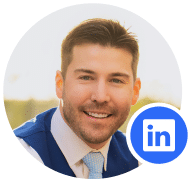The Slow-Moving Vehicle (SMV) sign is a fluorescent orange triangle with a red reflective border. It warns approaching drivers to slow down for vehicles moving at 25 mph or less.
The setting sun casts long shadows across the quiet country road as you cruise, enjoying the peaceful drive. Suddenly, a massive shape looms ahead. Your heart pounds as you slam on the brakes, narrowly avoiding a collision with a lumbering tractor.
In that split second, your eyes catch the flash of an orange triangle on the back of the tractor. The encounter leaves you curious, and you soon discover that many drivers share your initial confusion. Here is everything you need to know about SMV signs for safety on California roads.
What Is a Slow-Moving Vehicle Sign?
This emblem serves as a visual cue, warning approaching drivers to adjust their speed and proceed with caution. The Slow-Moving Vehicle (SMV) sign is simple yet critical because it enhances road safety.
Tractors, horse-drawn carriages, and road maintenance vehicles are just a few examples of vehicles that can only reach a maximum speed of 25 mph. These slow-moving vehicles (SMVs) must display a distinct orange triangle with a red border on their rear to alert faster-moving traffic.
Here is a closer look at its distinct features:
The Shape and Colors of the Slow-Moving Vehicle Sign
The sign is an equilateral triangle, a shape universally recognized as a warning symbol. Its vibrant fluorescent orange color is specifically chosen for high visibility, especially during dawn and dusk when visibility can be challenging.
A red reflective border further enhances its noticeability in low-light conditions, alerting other drivers to the presence of a slower vehicle ahead.
Size and Placement of the Slow-Moving Vehicle Sign
In the United States, the SMV emblem is required to be at least 16 inches wide and 14 inches high. It is mounted on the rear of the vehicle, centered between the left and right edges, with the point of the triangle facing up.
The recommended placement is between 3 and 5 feet above the road surface, ensuring optimal visibility for approaching drivers.
Unique Design for Maximum Visibility on the Slow-Moving Vehicle Sign
Unlike other road signs that often use text or symbols, the SMV sign’s simple geometric design is instantly recognizable, even from a distance. Its fluorescent orange color is known for its ability to stand out against various backgrounds, making it particularly effective in rural areas with varying landscapes.
The red reflective border adds another layer of visibility, mainly when headlights illuminate it at night.
How the Slow-Moving Vehicle Sign Compares to Other Road Signs
Its creation was a direct response to a sobering reality. In the 1960s, Ohio State University researchers found that nearly two-thirds of highway fatalities involving slow-moving equipment were rear-end collisions. Many of these tragedies occurred at night when unsuspecting drivers didn’t see tractors and other farm machinery until it was too late.
Due to its unique shape and color combination, the SMV sign is distinct from other cautionary signs, such as yield or merge signs. This distinction prevents confusion and ensures that drivers understand the specific message conveyed by the SMV sign: “Caution, a slow-moving vehicle ahead.”
Who Can Use a Slow-Moving Vehicle Sign in California?
These vehicles typically fall into a few distinct categories:
Agricultural Equipment
This enlists farm machines, like tractors, combines, hay balers, and sprayers. These are made for specific farm jobs, not for the highway. Besides, they are also big and hard to turn, the operator needs to take it slow to stay safe.
Horse-drawn Carriages
Horse-drawn carriages are a charming sight in rural areas. They are a mode of transportation with a long history, especially for the Amish people. While picturesque, these vehicles are naturally limited by the horse’s speed and stamina.
The SMV sign is crucial for alerting drivers to their presence and preventing accidents due to sudden braking or unsafe passing.
Construction Machinery
Construction vehicles, from excavators and bulldozers to road graders and dump trucks, are often massive and powerful. However, they are designed for specific worksite tasks, not for swift movement on highways.
Again, their weight, size, and specialized functions limit their speed, making the SMV sign a vital safety indicator.
Other Low-Speed Vehicles
The vehicles in this category don’t quite fit into the other ones. They are not fast enough to keep up with traffic on the highway but useful for getting around. These are scooters, golf carts, and those old clunkers that just won’t die. Even some of those fancy recreational vehicles make the cut.
Pro Tip
The speed limit for vehicles displaying the SMV sign is typically 25 mph or less and is set for:
- Safety: At higher speeds, the risk of collisions with faster-moving vehicles increases exponentially. The 25 mph limit provides a buffer zone, allowing another driver time to react and adjust speed safely.
- Vehicle Design: Their brakes, tires, and overall construction are made for lower speeds.
- Visibility: Due to their size and operation, SMVs often need more visibility. A slower speed allows the operator and other drivers more time to react to potential hazards.
Specific Laws Regarding Slow-Moving Vehicle (Smv) Signs in California
The California Vehicle Code (CVC) Section 24615 establishes the SMV Emblem Mandate. This mandate is a crucial part of SMV regulations. It requires any vehicle designed and operated at or below 25 mph on public highways to display a Slow-Moving Vehicle emblem. Key Provisions of the SMV Emblem Mandate:
- Vehicle Eligibility: The mandate applies to all vehicles, including farm tractors, implements of husbandry, and other vehicles designed for low-speed operation.
- Emblem Display: The emblem must be displayed on the rear of the vehicle, clearly visible from a distance.
- Emblem Specifications: The emblem must meet specific requirements, including size, color, and reflectivity.
It is a legal requirement, and the emblem has particular characteristics, as mentioned above. While most SMVs fall under this mandate, specific utility, highway maintenance, and construction vehicles actively engaged in work are exempt.
The CVC goes beyond the emblem requirement to address the safe operation of SMVs:
- Lane Usage under CVC Section 21654: SMVs must stay in the right-hand lane except when passing or preparing for a left turn. This keeps them out of the way of faster traffic.
- Yielding to Traffic (CVC Section 21656): If an SMV has five or more vehicles behind it on two-lane roads, the operator must pull off at the nearest safe turnout to let others pass.
Note
While the law mandates the emblem, responsible SMV operators often take extra precautions. Flashing amber lights and additional reflective tape significantly enhance visibility, especially in low-light conditions. The California Highway Patrol (CHP) offers a detailed informational bulletin on SMV emblems.
How To Respond to SMVs on California Roads
As a responsible driver, your actions are crucial in maintaining road safety. When encountering Slow Moving Vehicle (SMV) signs, follow these practical tips to ensure safe driving:
Slow Down Gradually
When you see an SMV sign, reduce your speed gradually. These signs indicate that you are approaching a vehicle moving slowly. Sudden braking can lead to accidents, so give yourself ample time to adjust your speed.
Besides, the California Vehicle Code (CVC § 22109) mandates that drivers must signal before stopping or significantly slowing down whenever possible. Failing to do so is a traffic violation punishable by a $238 fine. More importantly, this violation dramatically increases the risk of being rear-ended, potentially causing severe injury or property damage.
Maintain a Safe Following Distance
Keep a safe distance between your vehicle and the slow-moving vehicle ahead. Tailgating increases the risk of collisions, especially if the SMV suddenly stops or makes an unexpected turn. Remember the three-second rule – make sure there’s a good gap between you and the car ahead of you. Leave at least a three-second buffer zone to be on the safe side.
Check for Oncoming Traffic Before Passing
If you decide to pass the SMV, ensure there is no oncoming traffic. Use your mirrors and signal your intention to overtake. Be patient and wait for a clear opportunity to pass safely.
Pass Safely and Legally
When passing another vehicle, especially an SMV, follow these guidelines:
- Choose a suitable passing zone (e.g., straight road, good visibility).
- Signal your intention to pass.
- Accelerate smoothly and overtake without exceeding the speed limit.
- Return to your lane only with a clear view of the road ahead.
Be Prepared for Unexpected Maneuvers
SMVs may make sudden turns, stop abruptly, or enter side roads. Anticipate their movements and be ready to react. Stay alert and avoid distractions while driving. Consider the following scenarios:
- Narrow Roads: Passing an SMV on narrow roads can be challenging. Wait for more comprehensive sections or pull-offs.
- Hills and Curves: Be cautious when passing SMV on hills or curves. Visibility may be limited, so choose your moment wisely.
Presumed Negligence in Accidents in Slow-Moving Vehicles
California courts generally presume that a driver who causes a traffic accident is negligent. This principle can be particularly relevant in cases involving slow-moving vehicles (SMVs), where the slower speed can lead to unexpected situations for other drivers.
Using Failure To Adhere to Cvc Section 24615 as Evidence
The California Vehicle Code Section 24615 mandates that vehicles traveling at 25 mph or less display a specific slow-moving vehicle (SMV) emblem. If an SMV fails to display this emblem and causes an accident resulting in injuries, the lack of proper warning can be used as solid evidence of negligence.
This failure to adhere to a clear legal requirement demonstrates a disregard for safety precautions and can boost your personal injury claim. To establish a personal injury claim against a negligent SMV driver, you’ll need to prove:
- Duty of Care: The SMV driver was responsible for operating the vehicle safely and following traffic laws, including displaying the required SMV emblem.
- Breach of Duty: The SMV driver failed to fulfill this duty by not displaying the emblem or violating other traffic laws.
- Causation: The SMV driver’s breach of duty caused the accident and your injuries.
- Damages: You suffered actual damages (e.g., medical expenses, lost wages, pain, and suffering) due to the accident.
Tip
If you can demonstrate these elements and leverage the presumption of negligence and the violation of CVC Section 24615, you can strengthen your personal injury claim and increase your chances of obtaining fair compensation for your injuries and losses.
Not Displaying an SMV Emblem in California Is Costly
Failing to display the required Slow-Moving Vehicle (SMV) emblem on vehicles traveling 25 mph or under on California highways can lead to several legal and practical consequences. Violating CVC Section 24615 is an infraction punishable by a base fine.
When combined with court fees and other assessments, the total fine can easily exceed $200. A conviction for this infraction may also add a point to your driving record. Accumulating points can lead to increased insurance rates or even license suspension.
Driving a slow-moving vehicle without a visible emblem can contribute to impeding traffic, which is a separate offense under CVC Section 22400(a). This violation carries fines, typically from $100 to $250 for a first offense.
Pro Tip
Beyond legal consequences, not displaying the emblem creates a dangerous situation for yourself and other road users. The lack of warning increases the risk of rear-end collisions and other accidents.
For the most accurate and up-to-date information on fines and penalties, it’s crucial to consult the official California Vehicle Code or seek legal advice from a qualified professional.
By understanding and adhering to the SMV emblem requirement, you prioritize safety and avoid potential legal and financial consequences.
The SMV Sign Demands Your Attention To Keep Safe on California Roads
Slow-moving vehicles are standard on many roads, especially in rural areas. However, their presence can pose a significant risk if drivers are unaware of or do not respect the meaning of the Slow-Moving Vehicle (SMV) sign. Misinterpreting or ignoring this sign can lead to sudden stops, dangerous passing maneuvers, and devastating accidents. The SMV sign is not a mere suggestion; it’s a crucial warning that demands your attention.
By understanding its message and following the safety guidelines outlined in this article, you can protect yourself, the SMV operator, and other road users. For further information on slow-moving vehicle signs and state-specific regulations, consult resources such as the California DMV website or the National Safety Council. Contact a top-rated car accident attorney at Crockett Law Group if another driver causes a collision by failing to adhere to slow moving vehicle signs. Reach us by phone or through our quick contact form to get started on your claims as soon as today.










